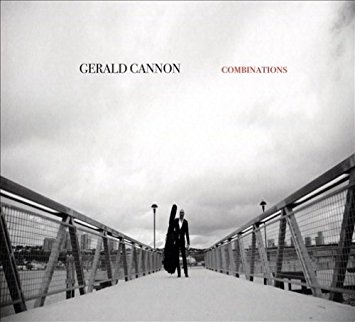Real music lovers can find the melody in everything. From the park to the concert hall, our friend Nelson Brill is always on the hunt for great sound. In this blog, Brill shares some new Audiophile jazz recordings.
New Audiophile Jazz Recordings To Spin And Savor
By Nelson Brill
January 14, 2018

Audiophile buddies gather around! Here are a few of my favorite new jazz recordings on CD or vinyl to share. They all contain toe-tapping music recorded with excellent sonics that deliver all the dynamic presence of these great musicians at play.

First off, there is cause for celebration in hearing the new recording by the magnificent vocalist Cecile McLorin Salvant and her savvy trio: Aaron Diehl on piano; Paul Sikivie on bass and Lawrence Leathers on drums. Dreams and Daggers [Mack Avenue Records; www.mackavenue.com] captures this magnetic partnership in delicious flight in their performances at the Village Vanguard in New York City in September, 2016.
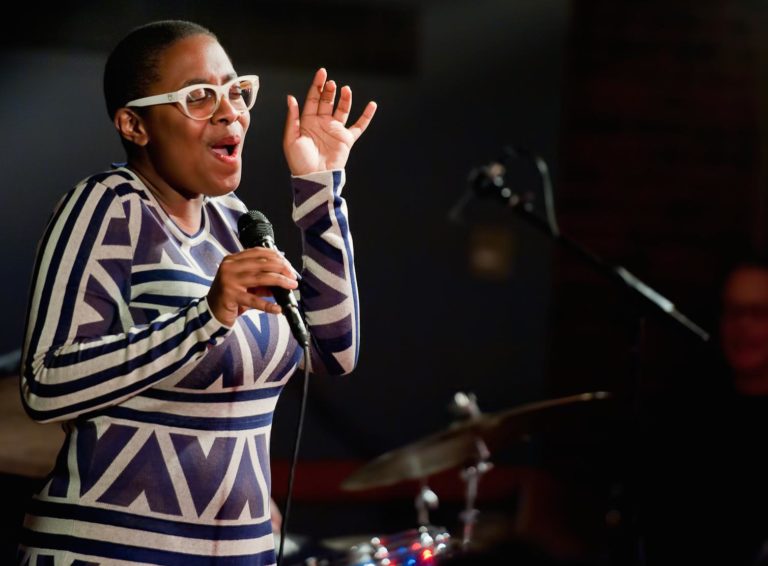
wnpr.org
Salvant’s singular voice fills every nook and cranny of this glorious live recording with joy. She pours herself fully into the vessel of the blues singing slow and radiant on her powerful version of “My Man’s Gone Now” and then spiky and sweet on Ida Cox’s classic “Wild Women Don’t Have The Blues” and in the comic stroll of “Sam Jones’ Blues.” Her vocal playfulness positively glows on such burbling romps as “Let’s Face The Music And Dance”; “Nothing Like You” and “Never Will I Marry.” She effortlessly fashions narratives by Kurt Weill and Langston Hughes into a coiled, unfolding performance (on the unflinching “Somehow I Never Could Believe”) and then she joins a velvety string ensemble with cool vocal glow on a few zesty originals. Salvant inhabits the narratives of her songs with effortless aplomb. She fills each with soft scampers; slow delicious murmurs or heady crescendos – all with expressive delight. She possesses this protean ability to maintain her lithe pitch control to lightly perch on any twig or branch in her wondrous vocal range with indelible expressiveness (from tender quips to full blasts of soulful heat).
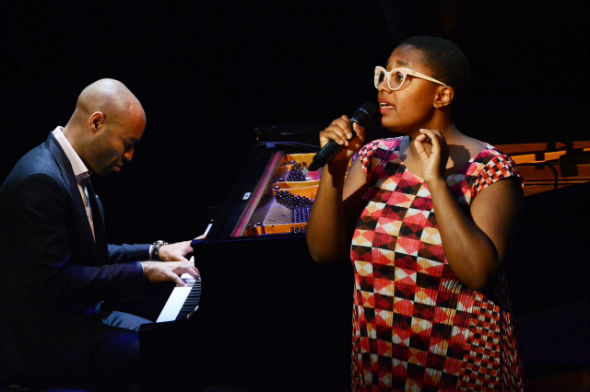
Harlem World Magazine
Her partnering trio is as dapper and impeccable as one of Mr. Diehl’s fastidious bowties. On Dreams and Daggers, each player dazzles in their solo work and in their collective whimsy with Salvant’s creative lead. Diehl is a master storyteller at his keyboard. He possesses the lightest of touches; the most devious velvety runs and can surprise with fresh bursts of octaves or soft isolated notes that combine for deep expressiveness. Sikivie’s bass is a resonant juggernaut (check out his pumping presence in duet with Savant on “You’re Getting To Be A Habit With Me”) and Leathers is a sensual propulsive machine on his drum kit (listen to his impeccable backbone on “Si J’etais Blanche”). Savant’s duet with guest pianist Sullivan Fortner on “You’ve Got To Give Me Some” is another highlight as it shakes with sassy fury and showcases Fortner’s own transfixing piano style and his swanking partnership with the ever-adventurous Salvant. The audiophile quality of Dreams and Daggers captures every tactile detail of these gleeful encounters within the acoustic space and energy of the Vanguard. The adoring audience is also ensnared up close and present in their boisterous enthusiasm for each musical gift bestowed by this stunning jazz band in action.
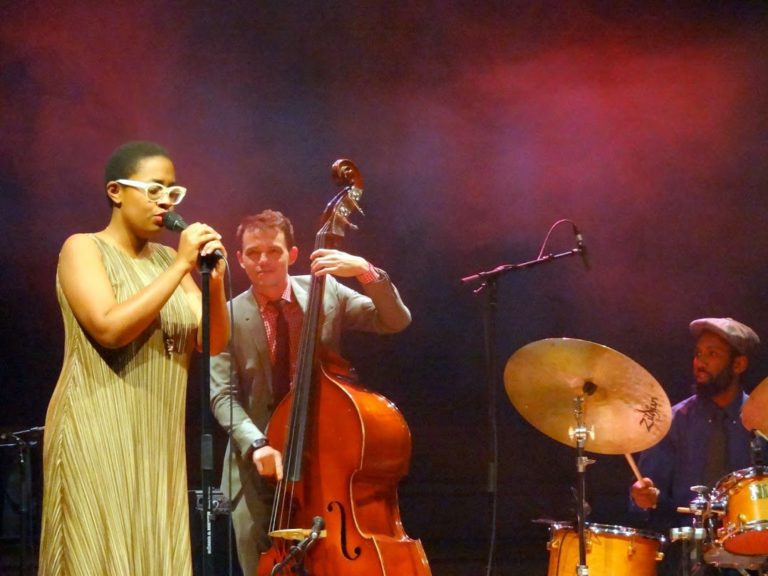
metrolyrics.com
Across town from the Village Vanguard, the eminent Jazz at Lincoln Center Orchestra (www.jazz.org/JLCO/) creates its own magic in performances at Lincoln Center in New York City. Two of its stalwart musicians, bassist Gerald Cannon and alto saxophonist Sherman Irby, each have new recordings out in which they contribute to each other’s smart, bracing and vital music.
Cannon’s Combinations [Woodneck Records; www.cannonmusicart.com] fires on all cylinders with swinging prowess, such as on the opening “Every Man Is A King” (with blaze of trumpet from Jeremy Pelt) or on “One For Amos” with Cannon’s fluid bass pumping behind Irby’s biting alto sax. The musicians gathered on this recording offer dynamic companionship to Cannon in their eclectic journey together. Russell Malone’s swanking guitar joins Cannon’s nimble bass in a radiant duet on “How Great Thou Art” while Gary Bartz’s smoothly cascading alto propels the unflinching R & B of “Gary’s Tune.” Pianists Kenny Barron and Rick Germanson bring their own glowing styles to several tunes that run from a shimmering bossa (“Amanda’s Bossa”) to the feathery lightness of “How My Heart Sings.” Drummer extraordinaire Willie Jones III brings his panache to everything he touches, including the blaring cacophony of “Columbus Circle Stop” which blares with Jones’ humming snare and crisp cymbal heat. Don’t miss the last tune, “Darn That Dream,” in which Cannon stretches his elastic acoustic bass to the max in a glowing solo piece where his fingers pull, hold and pluck upon his low strings to create a brewing cauldron of deep soulful dance.
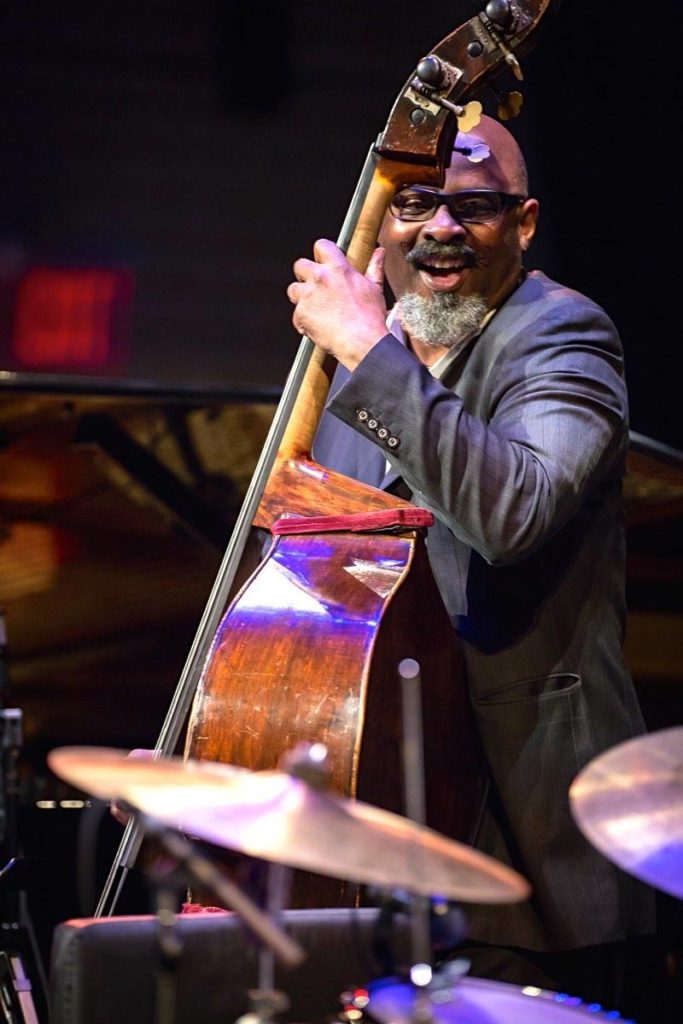
Cannon and Jones shine as well on Sherman Irby’s new recording, Cerulean Canvas [Black Warrior Records], another powerful statement of creative jazz mixing with blues heat.
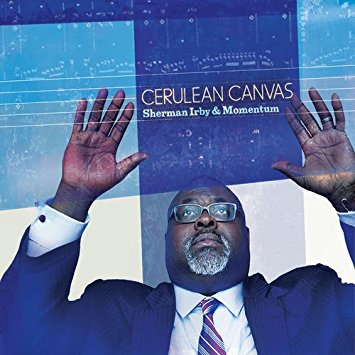
This recording is another audiophile gem, recorded by engineer Katherine Miller, who also recorded the Cannon Combinations session. Miller takes great care to deliver all the tactile details and buoyant energy of these two heated blowing sessions and ensnares all of their superlative musicianship and comradeship up close and personal.
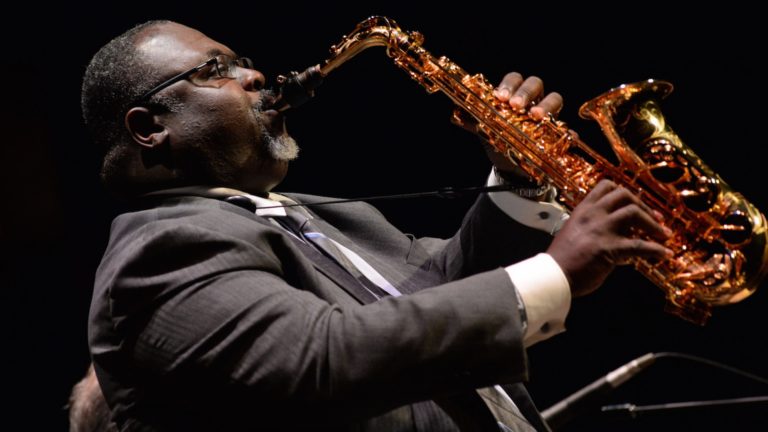
jazz.org
Irby’s sharp robust attack on his alto sax can sing in bellowing breathy notes as on his molten slow grooving heater, “John Bishop Blues” (with Cannon’s pungent bass pumping behind) or on his “Blues For Poppa Reed” (with pianist Eric Reed tenacious and twinkling). He can also sing on his alto sax in full ballad glory on the slow unfurling swing of “From Day By Day” and the loping gait of Wayne Shorter’s “Contemplation”. The unusual front line of Irby’s alto sax mixing it up with a tenacious trombone (plied by either Vincent Garner or Elliot Mason) is bold and expressive. “Willie’s Beat” and “Racine” are stellar examples, with trombone and alto sax rollicking to Reed’s pouncing piano notes and the sparkle of Jones’ nimble cymbal/snare combinations. Irby’s version of “Sweet Georgia Brown” is a sprite swinging delight where trombone, sax and bass frolic in lightning elegance to the dance of Jones’ wood rim hits.
Trombone also plays glorious partner to sax in another blazing recording session brought to us by the young baritone saxophonist, B.J. Jansen, on his new recording, Common Ground [RonninJazz; www.bjjansen.com].
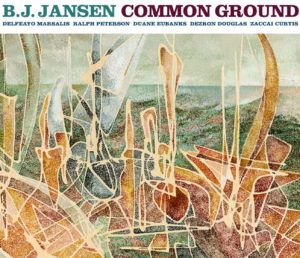
Jansen joins one of my favorite trombonists, the dapper and keenly creative Delfeayo Marsalis, in a collective that also includes trumpeter Duane Eubanks; bassist Dezron Douglas; pianist Zaccai Curtis and the indefatigable drummer, Ralph Peterson. They create another barn burning session that is captured on this recording in all its intense up-front energy and tactile crackle.
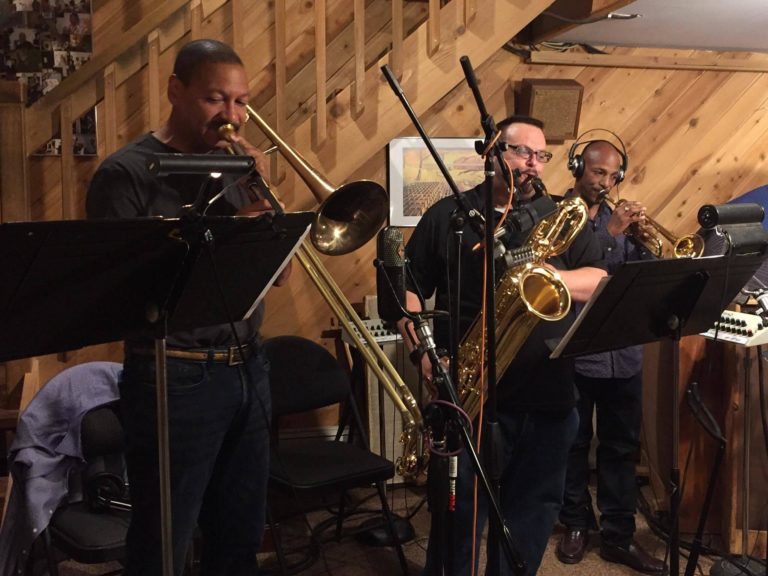
bjjansen.com
The heat is immediately felt on “Stacey’s Plan” as Jansen’s reedy baritone plunges and flows deep in partnership with Douglas’ bass and Marsalis’ colorful trombone declarations (filled with high note blares and slippery slides). Curtis shines with keyboard prowess as he delivers tight bluesy turns of phrase and deft soft note accents. “Bucket Full of Soul” also swings kinetically on Jansen’s baritone pelts and gutsy breeze (blowing from high registers to low) with Marsalis working his creative banter and bluster. In contrast, “Brandon’s Blues” walks in slow strides as baritone and (muted) trombone take a stroll in warm meandering fashion, until Eubanks trumpet interrupts with his brazen calls – all angular, creative shine. This glittering band can do anything it wills: moving effortlessly from the full bore swing of “Angela’s Aggravation” to the melodic flow of “Relaxin’ With Jessica”. The title cut, with a feel of John Coltrane’s combination of soulfulness and heat, is ignited by Jansen’s baritone solo roiling in colorful declarations of low reedy power and heft partnered with Douglas’ heady bass rolls and Peterson’s snare and cymbal power. The magnetic Peterson is a creative gale force throughout the recording. His percussive foundation lays the brickwork for all the garlands of sonic riches and grooves that are delivered from this tight adventurous band flourishing in their companionship.
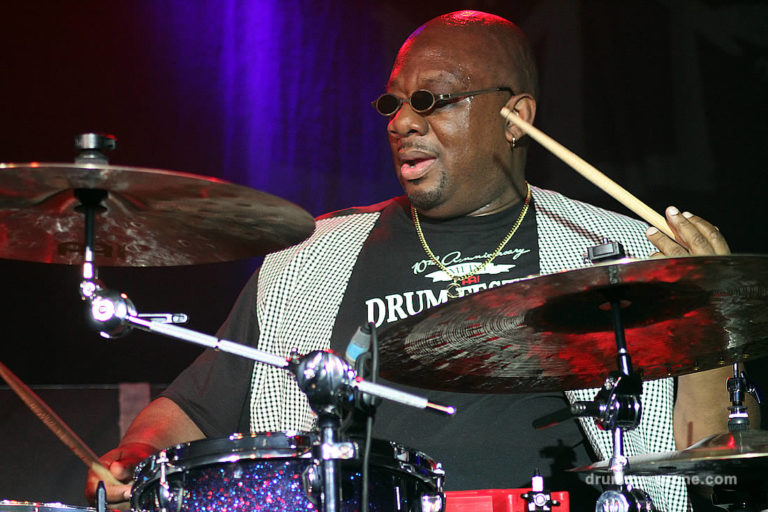
drummerszone.com
Shadows of John Coltrane and his compatriot genius, Thelonious Monk, linger over many of these new artists’ creative visions. Appropriately, two new recordings shine brightly upon Monk’s legacy.
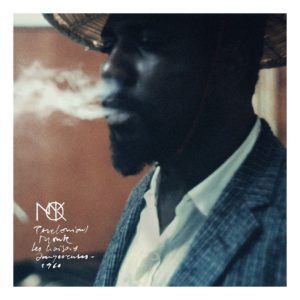
The first is a special audiophile quality LP (also available in a deluxe 2-LP box set) of a never-before released recording session by Monk joined by saxophonists Charlie Rouse and Barney Wilen; bassist Sam Jones and drummer Art Taylor at the Nola Penthouse Sound Studios in July, 1959. The occasion was to record a soundtrack for Roger Vadim’s film, Les Liasons Dangereuses and this new vinyl release of the same title, (produced by Zev Feldman, Francois Le Xuan and Fred Thomas for Sam Records/Saga [www.samrecords.fr]) invites the listener to take a front row seat to experience the informal give and take between these great musicians. Listening through my Rega RP-10 turntable with Alpheta 2 cartridge (www.rega.co.uk) and Aesthetix Rhea phonostage, (www.aesthetix.net) this LP’s surfaces were dead quiet and images were beautifully rendered. Although Monk’s piano is a bit recessed and its harmonic body slightly curtailed, there is a naturalness and informal quality to this session that immediately draws one into the drama and chemistry between these simpatico players. When the full band is involved, such as on their swinging “Well, You Needn’t,” or “Rhythm-a-Ning”, Rouse and Wilen’s saxes explode with dynamic presence in each corner; Taylor’s jumping sticks on his cymbal are crisp and clear and Jones’ walking bass is a pungent engine. Monk’s delicious and obtuse keyboard chases bind all this buoyant drama with his limpid bluesy phrases and pouncing chords. On “Six in One”; “Crepuscule with Nellie” and “Pannonica”, Monk’s solos are little marvels which are revealed on this splendid LP in all their intricate design and playful vision. The swank of Monk’s 12-bar blues, “Ba-Lue Bolivar Ba-Lues-Are” is icing on the cake as all of these gifted musicians take a spirited run at this voluptuous romp. The Sam Records LP of this historic session allows us to time-travel back to sit in a folding chair in the Nola Studio and relish all of these potent grooves and musical drama within the air, warmth and naturalness of the studio space that only an LP can provide.
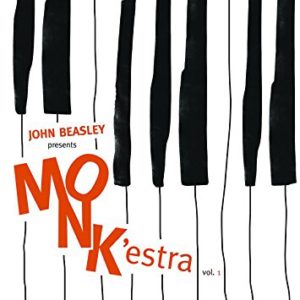
Taking his own inspiration from Monk’s incomparable razzmatazz with rhythms, instrumental colors and melodic fancy, pianist, composer and arranger John Beasley has reinvented many of Monk’s compositions into his own exuberant stew for his “MONKestra” Big Band. The band has released two volumes of recordings, entitled MONKestra Volume 1 and 2 both on Mack Avenue Records [www.mackavenue.com]. The recording quality of both of these titles is excellent with the full weight, spaciousness and colorful imagery of a swanking big band in creative flight captured in a layered and airy space. Beasley and his MONKestra can make a blaring New Orleans’ parade out of the glory of Monk’s “Round Midnight” or sail Monk’s “Skippy” into bluesy R & B territory, carefree and swinging. Monk’s “Little Rootie Tootie” is a collage of start and stop brass and woodwind soars while “Epistrophy” beckons with its dissonant swipes and clusters of tumultuous sounds (with guest Gary Burton frolicking on his crisp vibes). From Monk’s unpredictable vamps to his swinging bebop glory, everything is within the grasp of Beasley’s creative arrangements and the MONKestra’s consummate music making. They partner on these two recordings to flutter, spin and carouse in the playful landscape of Monk’s genius to the delight of our ears and our spirit.
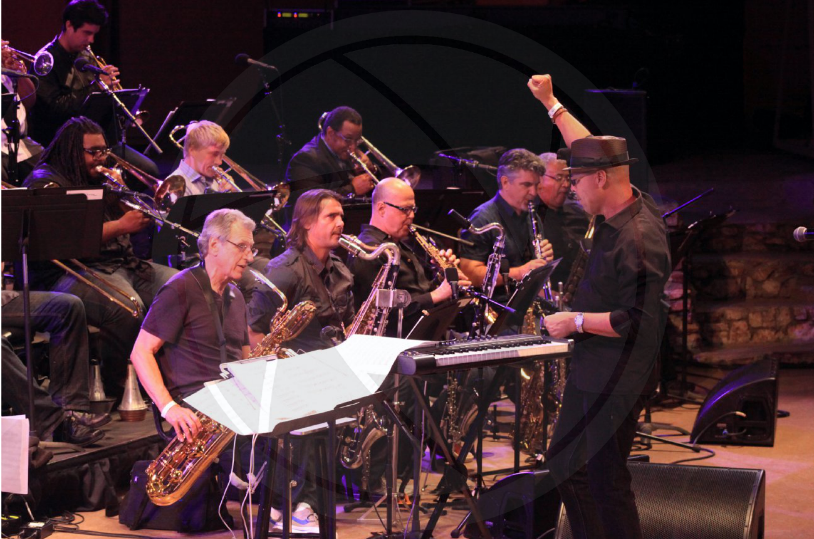
linkedin.com
If you would like to read more reviews like this one, visit Nelson’s blog at www.bostonconcertreviews.com.

